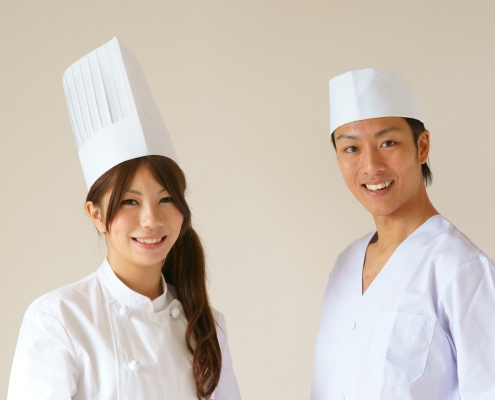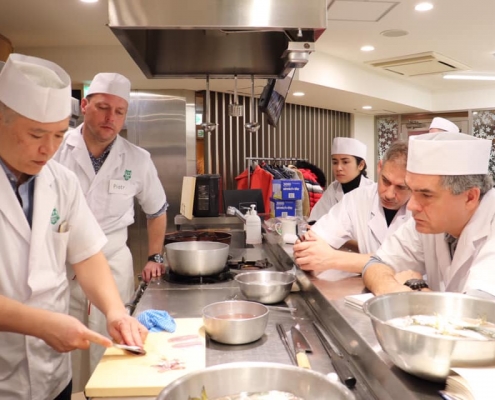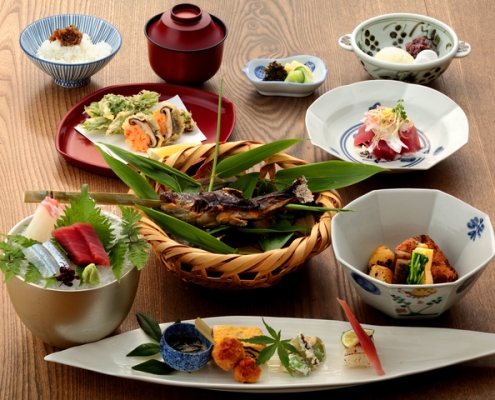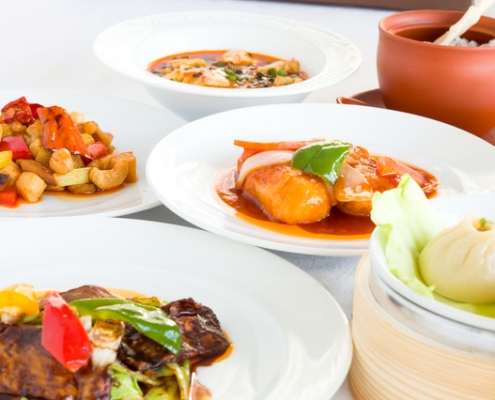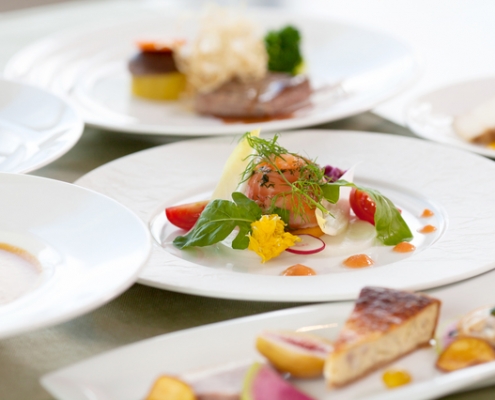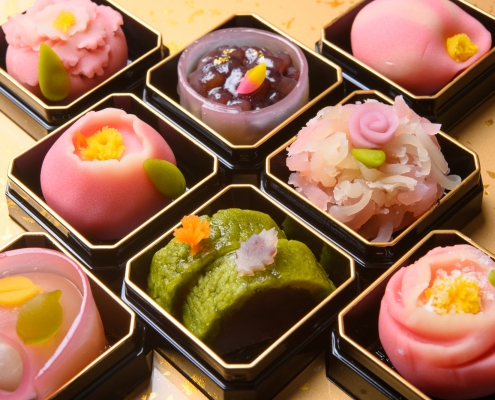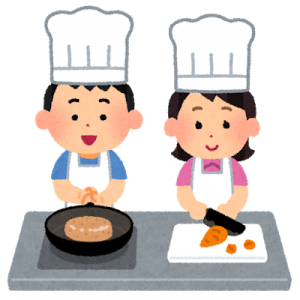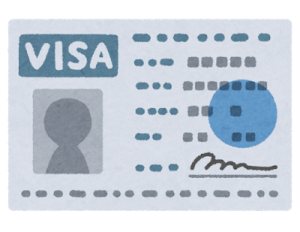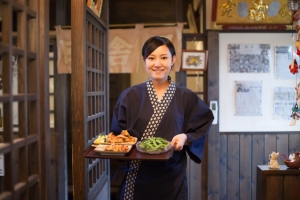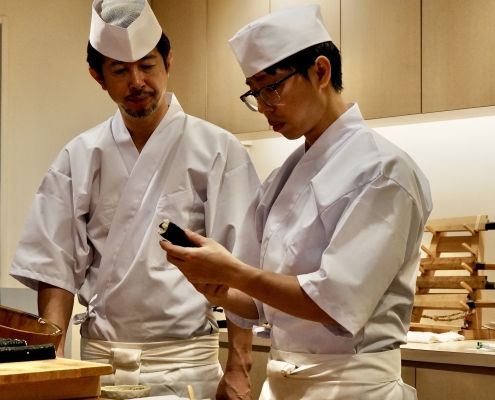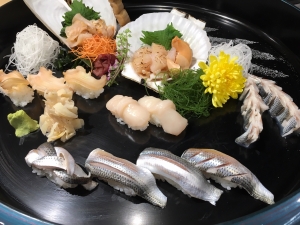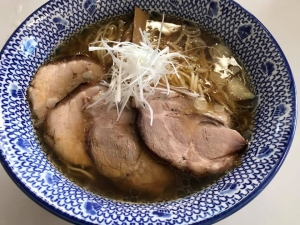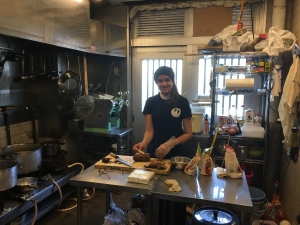All About Chorishi Senmon Gakko: Authorized Culinary Training Colleges in Japan
November 23 2021 Updated
There are broadly two types of culinary schools in Japan.
One is called Chorishi Senmon Gakko, which is approved by the government and teaches all the courses in Japanese. Its official English name is “professional training colleges for culinary arts approved by the government,” but I will just call it authorized culinary training colleges here.
The other type is private culinary school.
It teaches in Japanese, English, or Chinese for both native Japanese students and students from abroad.
The image of Tokyo Sushi Academy English Course
Contents
- 1 What Can I Learn at Authorized Culinary Training Colleges?
- 2 Language
- 3 What Kinds of Students Learn There?
- 4 How to Enroll in Authorized Culinary Training Colleges?
- 5 Estimate Time You Need to Reach the N2-Level
- 6 Course Term
- 7 What Schools Are There?
- 8 How Much Is Tuition?
- 9 Is There a Scholarship?
- 10 Do I Need a Visa?
- 11 Can I Have a Part-Time Job?
- 12 Certifications and Diplomas
- 13 Can I Work in Japan after Graduation?
What Can I Learn at Authorized Culinary Training Colleges?
You can learn not only Japanese cuisine and sushi but also confectionary or various cuisines, such as Chinese and Western.
Language
All the courses are taught in Japanese.
It is difficult to keep pace with the class without skills of reading and writing as well as speaking in Japanese.
What Kinds of Students Learn There?
Japanese Students
More than 90% of the students are Japanese in the ages of around 18 to 22.
More than half of the students have no experience in cooking when they enroll, but they hope to work at restaurants after acquiring knowledge and techniques at school.
One of the merits at this type of school is to study with Japanese youth who have the same dream.
Students from abroad
According to data in 2019, there are 456 students from abroad enrolled in authorized culinary training colleges in Japan.
Due to the global boom of Japanese cuisine, the last 5 years saw the number increase by about 2.5 times, but still they account for less than 10% of the whole student population. Among these international students, more than 90% are from Asia: 155 from China, 132 from South Korea, 62 from Vietnam and 62 from Taiwan.
Including some from North America and Europe, students from 18 countries are studying at 51 authorized culinary training colleges.
Students from abroad usually start with Japanese language schools in Japan or overseas to advance their language skills, before they enroll in authorized culinary training colleges.
How to Enroll in Authorized Culinary Training Colleges?
You need to have four following qualifications to be eligible:
Estimate Time You Need to Reach the N2-Level
It is said you need to study for 600 – 900 hours to reach the Japanese proficiency level required at authorized culinary training colleges.
Most of the students at authorized culinary training colleges enroll after going to Japanese language schools for a year or two and acquire the N2-level Japanese proficiency. Those who have learned Japanese at college or language school in their own country may enter the school directly.
Course Term
Most schools offer 1- or 2-year programs.
What Schools Are There?
TSUJI Culinary Institute Group
The Tsuji Culinary Institute Group has campuses in Tokyo and Osaka and is admitting international students most proactively now. As of 2019, there are 202 students from abroad at the Tsuji Culinary Institute where you can learn Japanese, Western, and Chinese cuisine, while 173 learn Western and Japanese confectionary and bread baking at the Tsuji Institute of Patisserie.
In 2021, they plan to start a new Japanese cuisine course that teaches sushi and tempura.
Kyoto Culinary Art College
You can learn Japanese, Italian, and French cuisine in Kyoto, roots of Japanese food culture. In the Japanese cuisine program, the courses teach Kyoto cuisine, which has 1,200 years of tradition, kaiseki cuisine (multi-course meals), Japanese confectionary, and sushi.
Tokyo College of Sushi and Japanese Cuisine
As the school name suggests, this school opened in 2016 as the first authorized culinary training college that specializes in sushi and Japanese cuisine in Japan.
Its English website below shows comments of students from Taiwan, Indonesia, China, and Malaysia.
How Much Is Tuition?
It depends on each school, but usually it costs one to two million JPY per year (approx. 9,000 to 18,000USD per year).
Is There a Scholarship?
Scholarship is offered by each authorized culinary training college or Japan Student Services Organization.
Do I Need a Visa?
If you go to an authorized culinary training college, you need to obtain a student visa.
After you are admitted to school, its staff can help you with the process of visa application.
Can I Have a Part-Time Job?
To work part-time, students from abroad need a permission from the Immigration Bureau for activities other than that permitted under your status.
Granted the permission, you will be able to work up to 28 hours a week (40 hours when school is not in session).
*For those who want to know more about work with condition with student visa, please read this article.
Certifications and Diplomas
It varies with each school, but following are certifications you can obtain after graduation.
Once you meet the school’s graduation requirements, you can have a school certificate.
Once you complete a program of 2 years or more and 1,700 credit hours, you can obtain a diploma, equivalent to the graduation of 2-year junior college. In English, your transcript will show:
Diploma
(Postsecondary Course [○○])
After graduating from a 1- or 2-year program, you can obtain a cooking license by applying through the local government.
Can I Work in Japan after Graduation?
Because of the Japanese Food Culture Human Resource Development Program, which started in 2014, those who graduated from authorized culinary training colleges can stay in Japan and work at restaurants up to 5 years with a Specified Visa for Designated Activities, while pursuing their study further.
We can see a gradual increase in the number of the graduates working at restaurants in Japan.
For those who are interested in the Japanese Food Culture Human Resource Development Program, please read this article.
What would you like to know more?
Private Culinary Schools in Japan
Frontier Zipang
An innovative culinary school where students can learn practical skills at partner restaurants in Yokohama and Tokyo.
Tokyo Sushi Academy
The first and the most popular sushi school in the world.
Japan Culinary Institute
Japanese culinary training including sushi, kaiseki, yakitori, wagashi and more.
Miyajima Ramen School
More than 1,000 graduates from over 50 countries.
International Ramen School
Ramen study program combined with OJT

